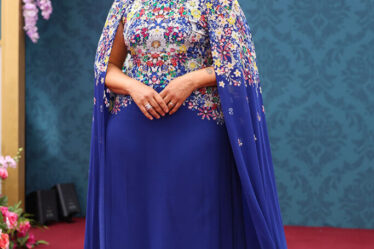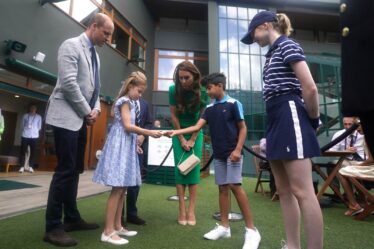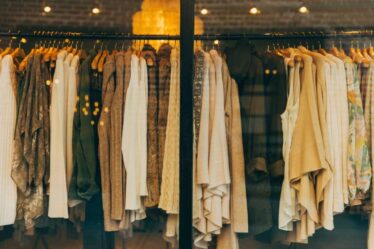
TThis month’s design news looks at different ways of taking control of your world, featuring everything from a furniture storage system created by fashion designer Raf Simons to an exhibition which explores different ways of healing and takin care of the world. Make sure you also read about new art book Boundless Minds in the section. Choreographer Muna Tseng says this about the downtown New York art scene: “It was our world. We built it.”
For more news on architecture, sustainable living, art, fashion and new ideas, sign up for our monthly newsletter here
1
London Design Festival delights
This year, London Design Festival celebrates its 20th anniversary. The event, which promotes the capital as a design destination, will celebrate in grand style. There’s going to be a henge – a stone circle – built in central London, 3D sculptures made from ocean plastic and an immersive virtual reality installation. With one of the largest creative economies of any city in the world, design is vital for the UK’s capital, with one in six people working in the creative industries.
Architect firm Stanton Williams and engineering company Webb Yates will create Henge, a neolithic-inspired stone structure designed as a circular meeting place in Greenwich Pennisula. Plasticity by Niccolo Casas is a 3D-printed sculpture made from ocean plastic supplied by Parley for the Oceans. The monument finds a new use of waste while highlighting the charity’s beach cleaning work.
This year, there’ll be 12 design districts – including relaunched districts Bankside and Pimlico Road. Bankside features Material Matters – a new event based on the acclaimed podcast of the same name – which champions the importance of materials for sustainability. Greenwich Peninsula and Park Royal return after successful debuts last year. Design London will be at North Greenwich again, with international pavilions from countries including Denmark, Korea, Portugal, Sweden and Thailand.
Sir John Sorrell CBE, London Design Festival chairman, says: “We consciously founded LDF to be public spirited. We not only aim to support designers by helping them showcase their work and generate business, but to create an understanding and appreciation for the creative industries by as wide an audience as possible.”
London Design Festival takes place 17-25 September in various venues
2
Relax at home with Raf Simons

Designer Raf Simons may be famous for his work at the fashion houses of Dior and Prada, but when he trained at Luca school of Arts in Ghent he graduated in industrial design and that love of furniture and fabric has never left him.
While his collections with Danish fabric manufacturer Kvadrat have become an annual pleasure for the past eight years, now the collaboration moves on. Kvadrat/Raf Simons launched the Shaker system this month – a home storage system and accessories in four smart colours.
Simons’s interest in Shaker culture – a system based on simplicity and function – came from his years living in the US. Shaker style also influenced two of his favourite sculptors, Donald Judd and John McCracken. The foundation of the collection is the Shaker peg rail covered in Vidar 4 fabric from the Raf Simons range. Adding a material cover to the rail was inspired by French designer Jaques Adnet. Other accessories include a tote bag, keychain, throw and cushions, as well as storage boxes and sleeves and a magazine strap.
“I’ve moved a lot,” says Simons, “from Europe to America and back, always having to organise myself in a new home. There are all these trends telling you how you could cope but I never found the right system, the clever, beautiful one. So this really came from a personal need.”
The Raf Simons/Kvadrat Shaker system is available from stockists across Europe
3
Keith Haring meets the Tsengs
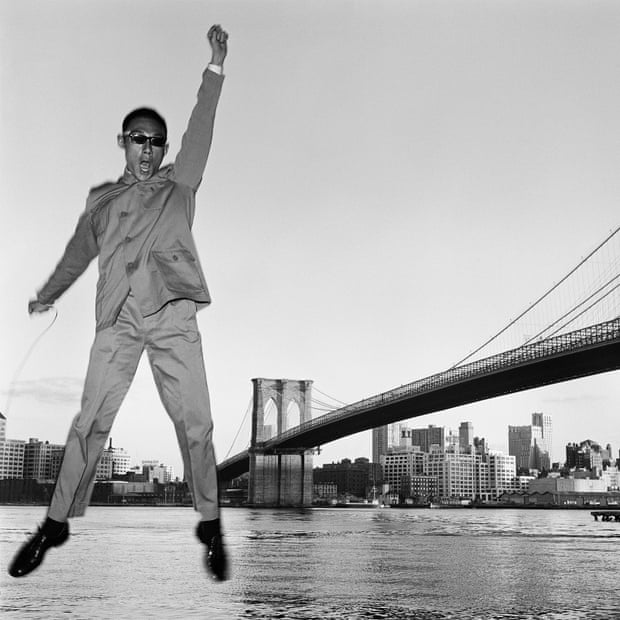
While artist Keith Haring’s name is world famous, his friendship and collaborations with dancer and choreographer Muna Tseng and her brother, photographer Tseng Kwong Chi, are less well known. But now a new book – Boundless Minds & Moving Bodies in 80s New York – introduces readers to this creative trio and provides a poignant snapshot of the fertile downtown art scene of the time.
The Tsengs emigrated from Hong Kong via Canada in 1978 and met Haring in 1979. Muna’s studio was across the street from the artist’s place on Broome Street. Haring saw Kwong Chi on the corner of First and Fifth. “He was so eccentric looking I knew I had to meet this person. I ended up sort of cruising him, but then we became friends.”
Haring collaborated with Muna on her dance piece, Epochal Songs, creating a set for the performance. Muna set up her own company in 1984. Kwong Chi documented a lot of Haring’s work, including his subway works. These photographs were published in the book Art in Transit in 1984. Kwong Chi also travelled with Haring and created many of the photos which made his most famous work on these trips – the self-portrait series East Meets West. Both men died of Aids in 1989, after one decade together as friends and collaborators.
Boundless Minds is published now to mark 40 years since the premiere of Epochal Songs. Muna says in a conversation with critic Carlo McCormick printed at the start of the book, she’s also the only one left alive to make sure their stories are told. The photos bring that 80s scene so vividly to life, the faces, the places and the vitality. As Muna says: “We were famous downtown. No one had heard of us but we were famous in a kind of Warholian way. It was our world. We built it.”
Keith Haring, Muna Tseng & Tseng Kwong Chi – Boundless Minds & Moving Bodies in the 80’s New York by Cynthia Jordens, Fabian de Kloe (Nai010 Publishers)
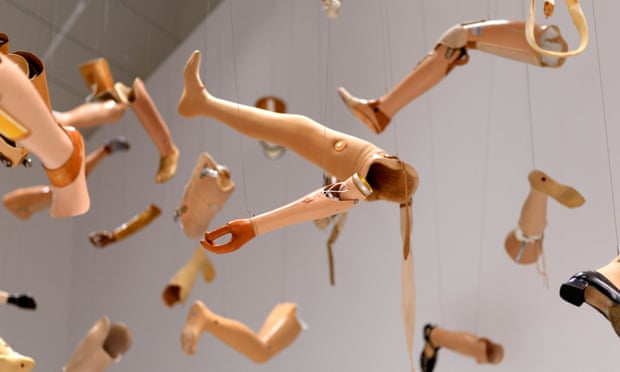
Next month, German art gallery Gropius Bau opens an ambitious new show called Yoyi!! Care, Repair, Heal. The exhibits are the fruit of a long-term research project by a diverse international team of artists and academics, all looking at ways to mend the world.
Yoyi is a ceremonial song and dance from Australian indigenous Tiwi culture. It’s a ritual of celebration and mourning, a summit. And that is what this exhibition is, too. Twenty-six international artists have looked at community care and repair, bringing their own unique perspective to the show. A number of co-curators have worked as a team to bring as many cultural perspectives as possible, using everything from astrology and witchcraft to colonial collections to tell their story.
Co-curator Natasha Ginwala says: “This exhibition brings forward how history is carried in the body and what it means to be living with wounds, social vulnerability and sickness.”
Creatives participating include Australian artists Betty Muffler and Maringka Burton who are also ngangkaris (traditional healers). Their large-scale paintings feature lines identifying the movement of water in the desert, as ngangkaris are said to control weather systems and bring rain to the drought-prone regions where they live and work.
French Algerian artist Kader Attia suspends prosthetic limbs from the gallery ceiling for his work, On Silence. He sees them as the start of overcoming loss, especially for victims of war.
Australian Wiradjuri artist Brook Garru Andrew, another of the exhibition’s curators, says: “In an increasingly global world, where colonial reparations motivate a movement towards a better world of care and reciprocity, the exhibition is an experiment to see how we can possibly heal.”
Yoyi! Care, Repair, Heal is at Gropius Bau, Berlin, from 16 September 2022-15 January 2023
5
Sarabande opens new studios
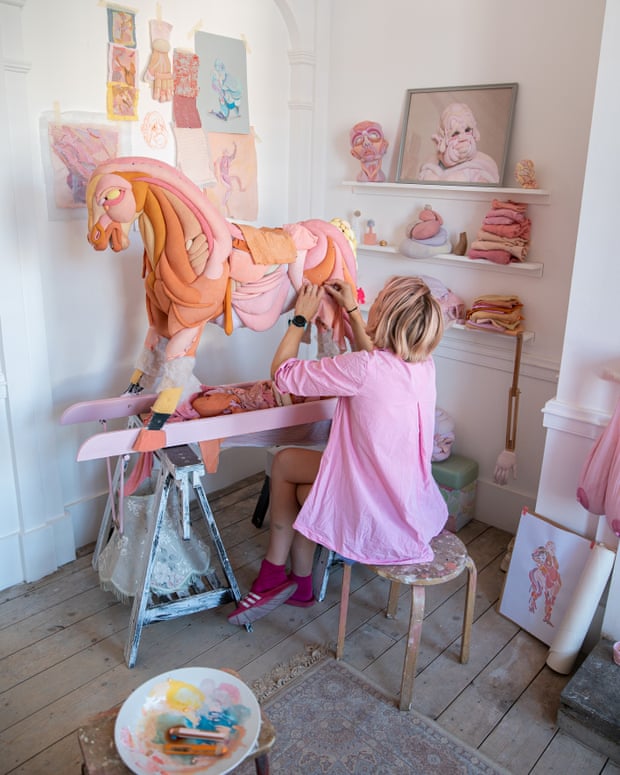
Designer Alexander McQueen’s Sarabande Foundation is expanding into Tottenham, London, this autumn. Sarabande is an organisation that provides scholarships, mentoring and studio space for gifted creatives. It was founded by McQueen and the majority of his estate has been used for the foundation. Studios at Sarabande’s headquarters in Haggerston’s Hertford Road, open since 2015, have helped more than 130 creatives from 31 countries, including designers Craig Green and Bianca Saunders, painter Michaela Yearwood-Dan and photographer Sam Rock.
Sarabande’s new Tottenham studios are for creatives who need help taking their careers to the next level. Across two Grade II-listed Georgian townhouses, the foundation has created 15 studios which will be let at £1 per square foot to artists and painters.
As well as helping individuals and creating a creative community within the complex, this development will help local regeneration. Sarabande High Road will be part of Paxton17, a new arts quarter centred on Northumberland Terrace. The scheme hopes to combine sensitive renovation with the historic buildings in the area and encourage more creative organisations to move to the area.
Trino Verkade, founding trustee of Sarabande Foundation, said: “The need for inexpensive artists’ studios is higher than ever. Tottenham is recognised as an economically deprived area but one field where it is flourishing is within the creative industries. Sarabande High Road will be a big part of creating a new cultural hub in Tottenham, much like how Peckham has been transformed through its burgeoning art scene. It also means that local residents will not have to travel into central London to experience cutting-edge art and culture, it will be right there on their doorstep.”
To apply for one of the new Sarabande studios, contact the foundation
6
The VW Camper hits the road

The VW Microbus was originally inspired by a flatbed parts-hauler at the Volkswagen plant in Hanover. Ben Pon, a Dutch importer of VW Beetles, came up with the boxy, flat-fronted design which would become the Kombi, first put into production in 1950.
From an insignificant start, the VW campervan has become an icon recognised around the world. It always looked different – its is at stark contrast with the polite family cars produced in Detroit or the luxury vehicles from Europe. That oblong body was easy to customise, too, and as the decades went on, flowers, peace signs and protest slogans decorated its flanks as it became the transport of choice for groups travelling to protests or festivals.
Production of the van only stopped in 2014, but now it’s back as an electric vehicle for the next generation of travellers looking to do things differently. The ID Buzz is based on its ancestor’s design, with the same flat front and outsized VW logo. But this version comes with an interior made from fabric using recycled ocean plastics and bottles. Buzz is the first fully electric vehicle from Volkswagen.
VW suggests its spacious interior should be used as a “mobile home office”, an idea that would probably hold little appeal for original owners of a hippie bus – as the campervan was known in the 60s – but they’d probably pleased that the icon of the road has been resurrected.
7
E-waste chic with jeweller Lylie
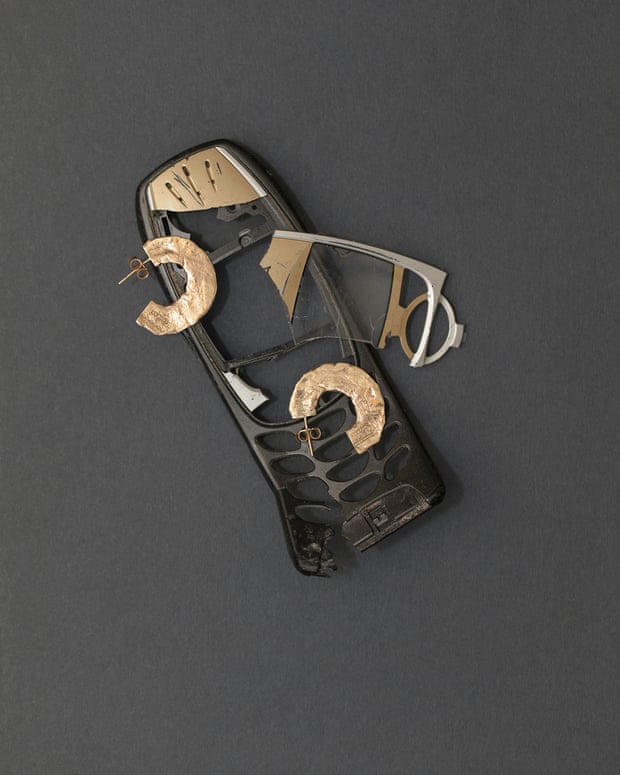
Few jewellers get a hallmark created for them, but Eliza Walter, designer at Lylie, is not like any other. Lylie is the only jeweller in the UK using gold and silver salvaged from discarded electronics and dental waste. It is this work that has seen Walter awarded a special “salvaged” hallmark unique to the brand. “The repurposed origin of our jewellery is a huge part of its history, which is why we are so proud to have been awarded a hallmark by the Birmingham Assay Office,” says Walter. “We chose this mark to be a sun, after considering its significance [for] the entire ecosystem.”
She first became interested in e-waste when she went to a foundry during her design GCSE. “The owner explained to me that my mobile’s circuit boards contained precious metals, because of their inert and conductive properties. We’ve been working together ever since, his foundry casts all of Lylie’s pieces.
“In my second year at university, I won a tiny grant, and – typical student and being in ‘green’ Bristol – I started researching clean, green and recycled jewellery options and the idea for Lylie was born.”
Lylie designs may be made from modern waste, but the inspirations are timeless. Her jewellery is influenced by the natural world from the intricate lattice of coral reefs to the shape of the planet itself.
Walter also operates a gold exchange so customers can recycle unwanted jewellery for credit, which gives her a buzz. “Seeing old, broken and unloved jewellery arrive and then, a couple of months later, once it has been refined and cast, becoming something new – it gives me a huge amount of pleasure. A timeless design and a circular story are increasingly representing the ultimate hallmark of luxury.”

